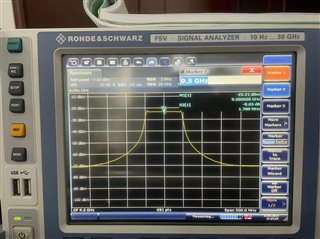Hi,
We purchased AFE7950EVM and tested it together with ZCU102. I have applied for TI's JESD204B IP.
I use this source code package: ZCU102-AFE79xx_8b10b10Gbps. According to document TI204c-Setup.docx,I connected TXA to a spectrograph and measured a single tone signal with an amplitude of around -9.5dbm.
I generated a linear frequency modulation signal with a bandwidth of 100MHz using Matlab, with 1024 sampling points and a sampling rate of 491.52MHz.
I modified the FPGA code of zcu102 and modified the ‘refdesign_tx.sv’ file to enable the FPGA to transmit 1024 point IQ signals.
But when I measured the signal amplitude of txA on the spectrograph, it was only -23.2dbm. Is this amplitude normal and can it still be increased?



